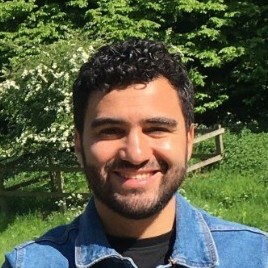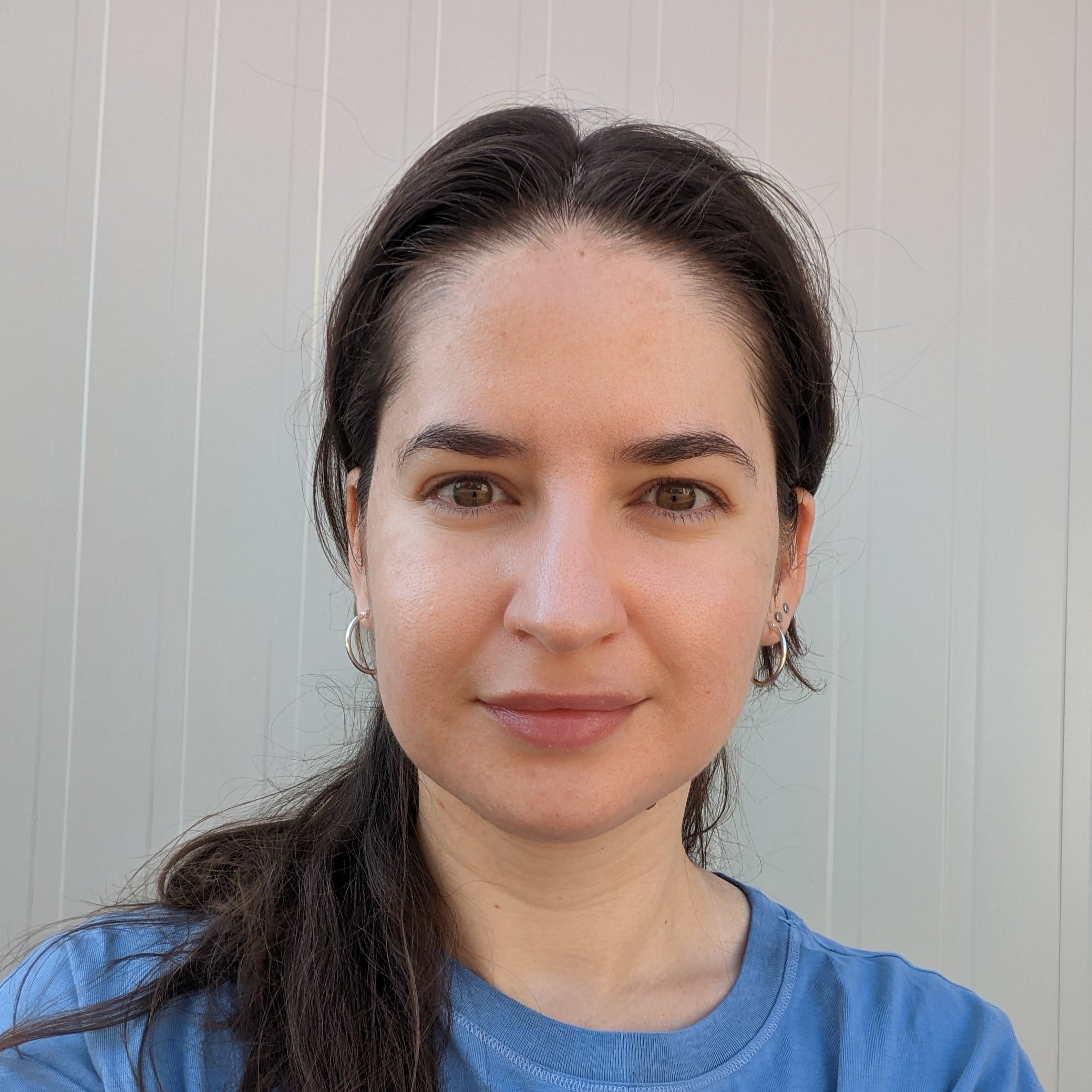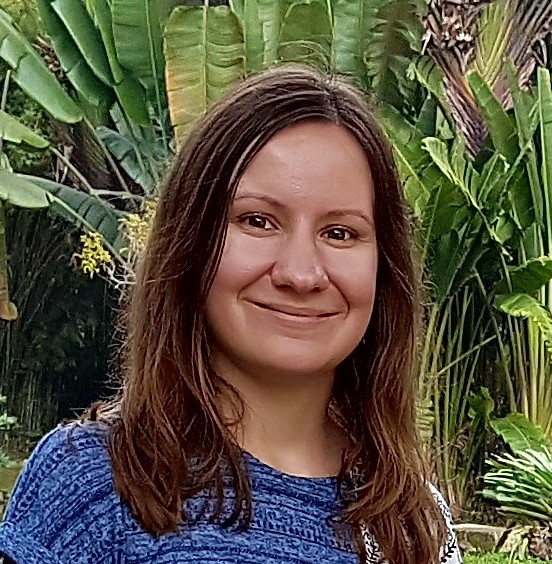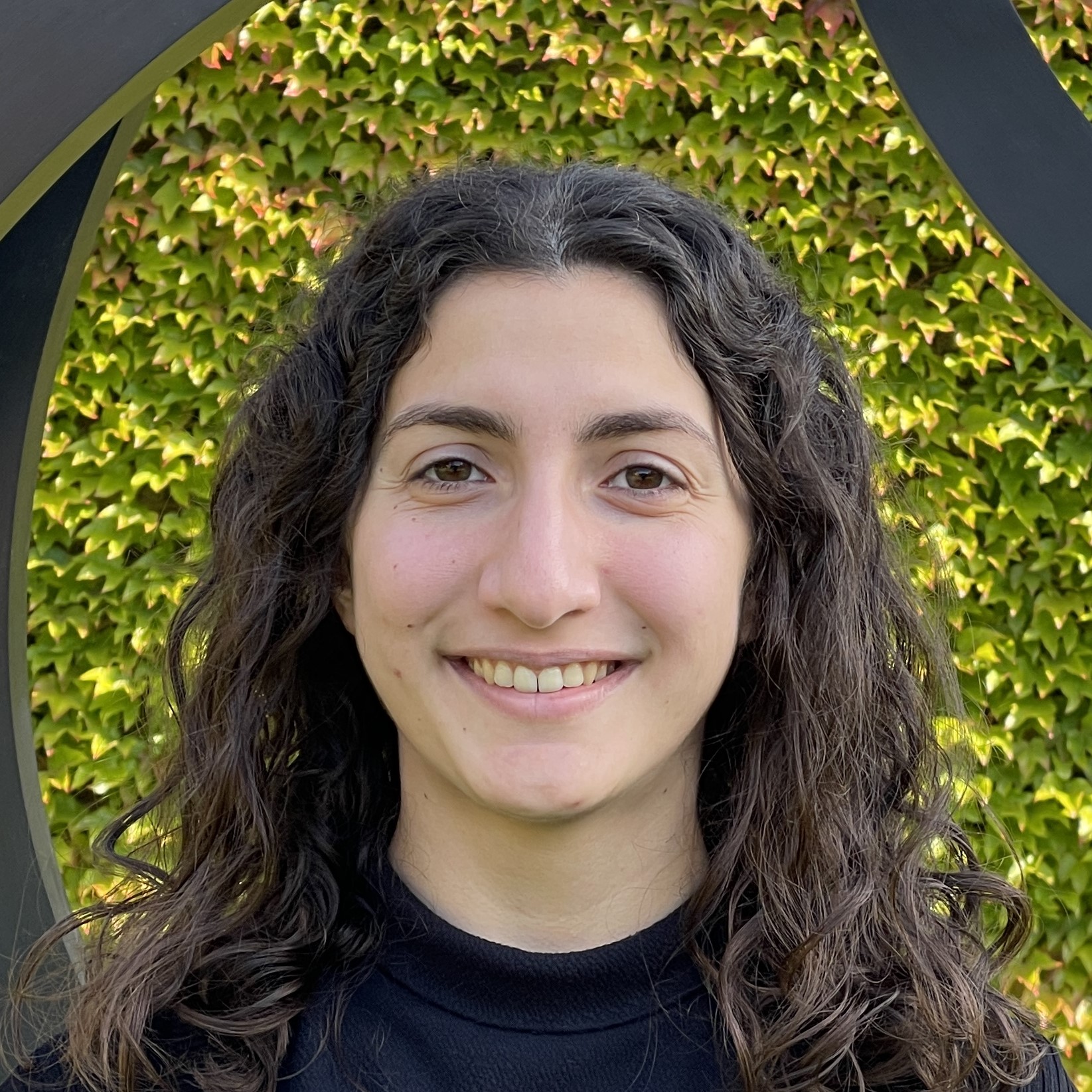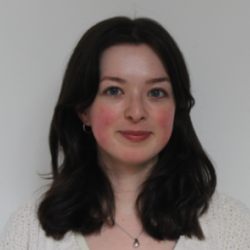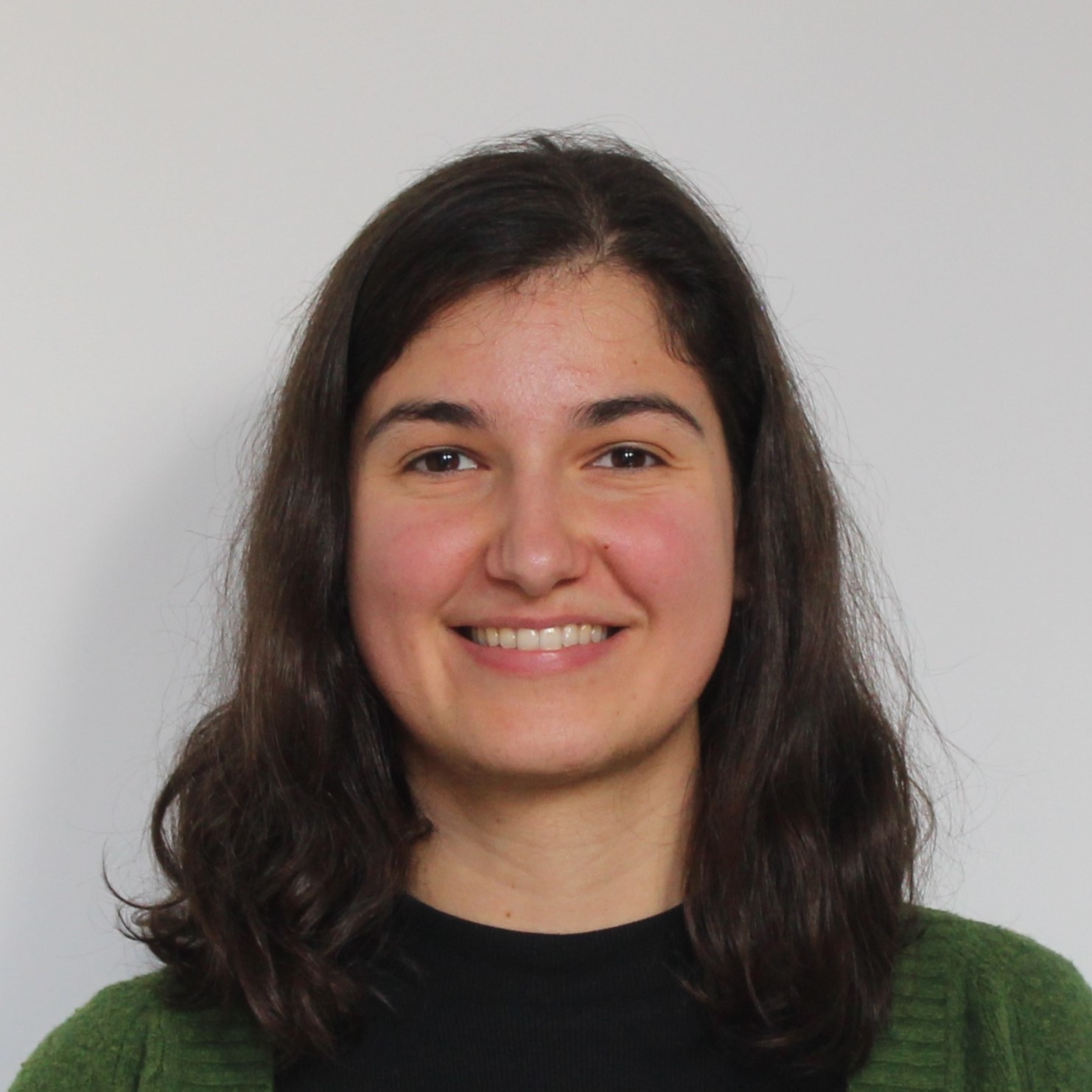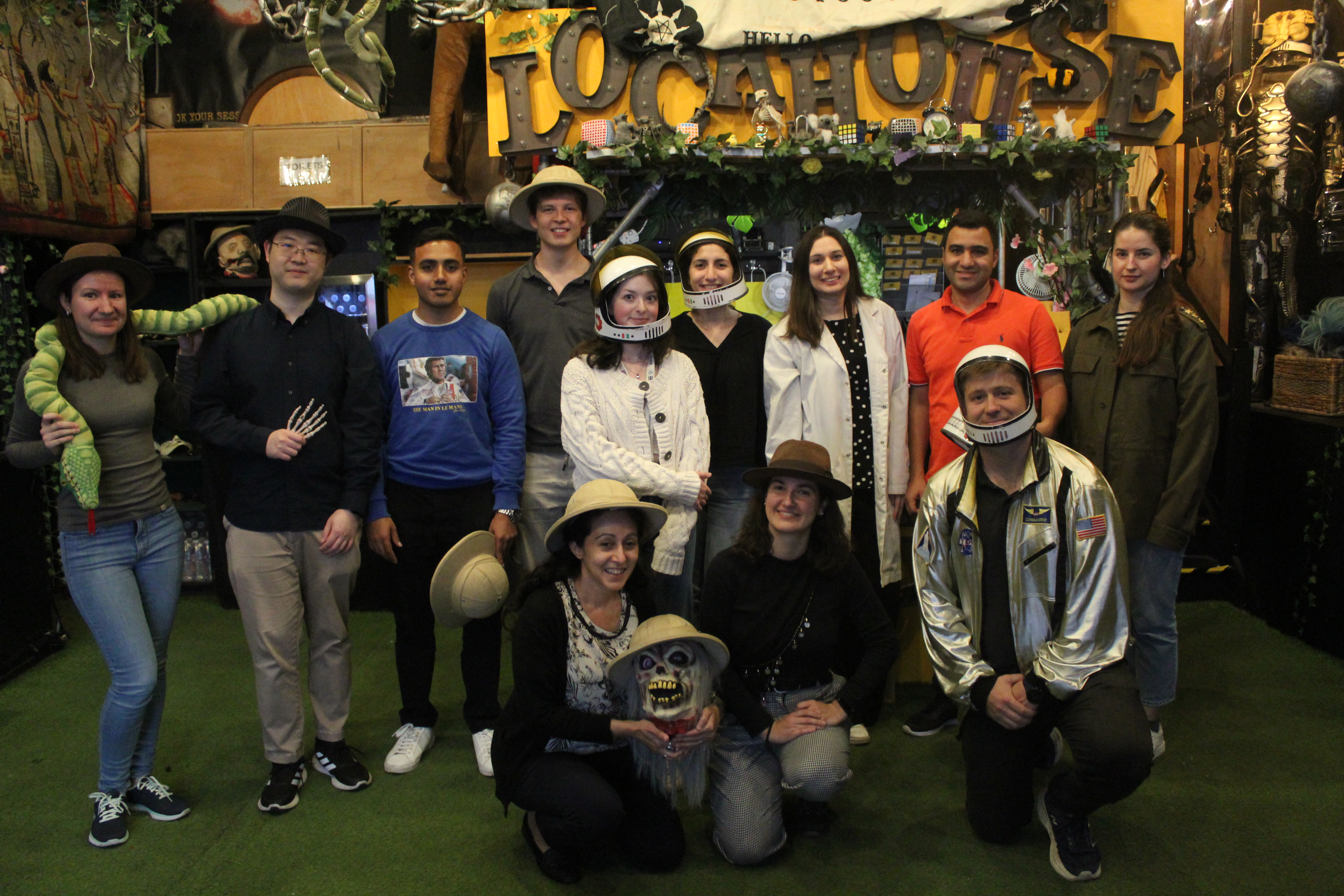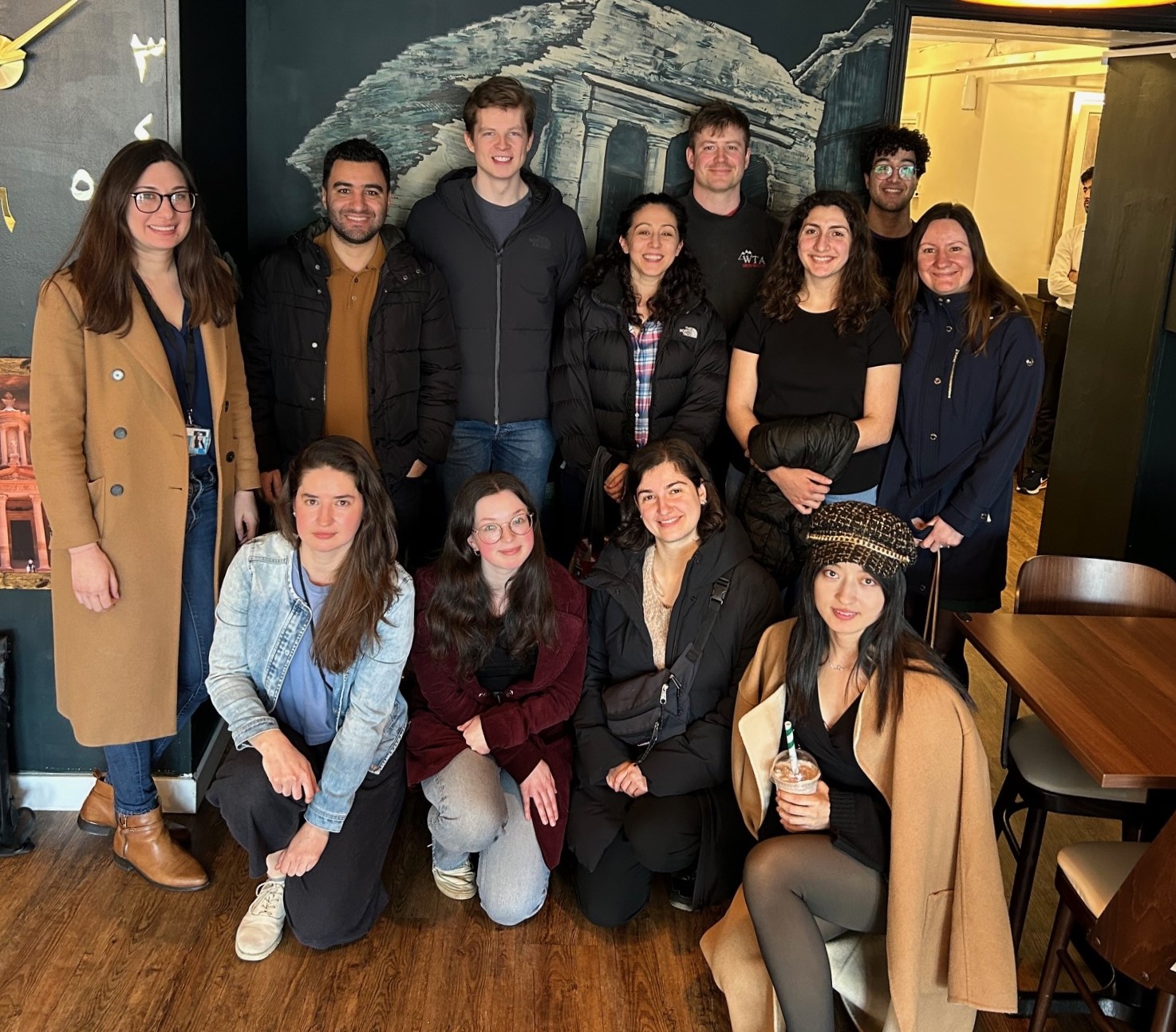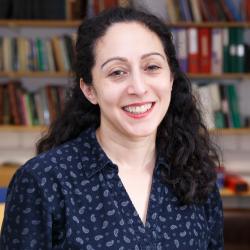Biography
Kathy Niakan is Mary Marshall and Arthur Walton Professor of the Physiology of Reproduction and Director of the Loke Centre for Trophoblast Research at the University of Cambridge. She is also Co-Chair of the Cambridge Reproduction Interdisciplinary Research Centre. Kathy is an Honorary Group Leader at the Babraham Institute and Affiliate Member of the Cambridge Stem Cell Institute. Kathy obtained a B.Sc. in Cell and Molecular Biology and a B.A. in English Literature from University of Washington. She obtained her PhD at University of California, Los Angeles, supported by a National Institutes of Health Pre-doctoral Training Grant, Paul D. Boyer Fellowship and a Chancellor’s Dissertation Year Fellowship. She undertook postdoctoral training at Harvard University where she developed an interest in early human development. She was a Loke Centre for Trophoblast Research Next Generation Research Fellow at University of Cambridge. In 2013 she started her laboratory with a focus on mechanisms regulating early human development at the MRC National Institute for Medical Research and subsequently the Francis Crick Institute. Kathy was elected to EMBO membership (2024), awarded the Genetics Society Mary Lyon Medal (2024) and a Blavatnik Award UK Finalist in Life Sciences (2019). Kathy’s laboratory pioneered approaches to investigate the function of genes that regulate early human development and the molecular mechanisms that direct cell fate in human embryos. Her laboratory obtained the first nationally regulated approval to genetically modify human embryos in research which attracted widespread policy interest. This research licence was acquired as part of the permanent collection at the Science Museum in London, where scientific objects from the laboratory have also been exhibited.
Research interests
The goal of our research to understand the molecular mechanisms that control early human development. The mechanisms that regulate early cell fate decisions in human development remain poorly understood, despite their fundamental biological importance and wide-reaching clinical implications for understanding infertility, miscarriages, developmental disorders and therapeutic applications of stem cells. We seek to uncover when and how human embryonic epiblast cells are established and maintained, and to understand the molecular mechanisms that distinguish these pluripotent cells from extra-embryonic cells during embryogenesis. We will further develop pioneering methods to investigate gene function during human embryogenesis using CRISPR-Cas9-mediated genome editing, TRIM-Away protein depletion, constitutively active and kinase dead variants of proteins and small molecule inhibitors and activators. These approaches will enable us to directly test the function of genes involved in signalling pathways, and key transcription factors downstream of these pathways, which we hypothesize are involved in the first and second cell fate decisions. Altogether, we seek to make significant advances in our understanding of the molecular programs that shape early human embryogenesis, which has the potential to provide fundamental insights and to drive clinical translation.
Our laboratory has pioneered approaches to investigate the function of genes that regulate human preimplantation embryo development. To date, we have uncovered a mechanism underlying the first lineage decision in human embryogenesis; discovered gene regulatory networks specific to human embryos, which are not found in mouse embryos; and identified mechanisms that are evolutionarily conserved across mammals. These discoveries validate the need to study human embryos directly. By integrating signalling insights gained from transcriptomic analysis of human blastocysts, we have defined human embryonic stem cell (hESC) culture conditions that more closely recapitulate the embryonic niche. The foundational knowledge we have generated will be informative to further improve ex vivo models to better understand human biology. By applying the knowledge we gained from dissecting the molecular programs in the developing embryo, we are identifying signalling pathways and transcription factors that mediate a cell fate switch from a pluripotent embryonic stem cell (ESC) to yolk sac or placental progenitor cells.
Lab Members
Dr. Ahmed Abdelbaki Abdelaal
Postdoctoral Research Associate
Ahmed obtained his bachelor's degree from Zagazig University in Egypt, a master's degree from Georgia State University in the United States, and a PhD from the University of Cambridge. His research focuses on uncovering the mechanisms that control cell fate decisions in early human embryo development.
Publications
- Ahmed Abdelbaki, McCarthy A, Karsa A, Muresan L, Elder K, Papathanasiou A, Snell P, Christie L, Wilding M, Steventon BJ, Niakan KK. Live imaging of human embryos reveals mitotic errors and lineage specification prior to implantation. bioRxiv. 2024. doi: https://doi.org/10.1101/2024.09.26.614906.
- Balestrini PA*, Ahmed Abdelbaki *, McCarthy A, Devito L, Senner CE, Chen AE, Munusamy P, Blakeley P, Elder K, Snell P, Christie L, Serhal P, Odia RA, Sangrithi M, Niakan KK, Fogarty NME. Transcription factor-based transdifferentiation of human embryonic to trophoblast stem cells. Development. 2024;151(17). doi: 10.1242/dev.202778.
- Ahmed Abdelbaki, Ascanelli C, Okoye CN, Akman HB, Janson G, Min M, Marcozzi C, Hagting A, Grant R, De Luca M, Asteriti IA, Guarguaglini G, Paiardini A, Lindon C. Revisiting degron motifs in human AURKA required for its targeting by APC/CFZR1. Life Sci Alliance. 2022 Nov 30;6(2). doi: 10.26508/lsa.202201372. Print 2023 Feb.
- Wang R, Ascanelli C, Ahmed Abdelbaki, Fung A, Rasmusson T, Michaelides I, Roberts K, Lindon C. Selective targeting of non-centrosomal AURKA functions through the use of a targeted protein degradation tool. Communications Biology.2021;4:640. doi: https://doi.org/10.1101/2020.07.22.215814
- Ahmed Abdelbaki. First-person interview. Journal of Cell Science. 2020;133: jcs249649. doi: 10.1242/jcs.249649. Published 22 June 2020.
- Ahmed Abdelbaki, Akman B, Poteau M, Gavet O, Guarguaglini G, Lindon C. AURKA destruction is decoupled from its inactivation during mitotic exit and is required instead to suppress interphase activity. Journal of Cell Science. 2020; jcs.243071. doi: 10.1242/jcs.243071.
- Featured for interview to discuss our findings Rhys Grant, Ahmed Abdelbaki, Alessia Bertoldi, Maria P. Gavilan, Jörg Mansfeld, David M. Glover, Catherine Lindon. Constitutive regulation of mitochondrial morphology by Aurora A kinase depends on a predicted cryptic targeting sequence at the N-terminus. OPEN BIOLOGY. Published 13 June 2018. DOI: 10.1098/rsob.170272
Dr Katarina Harasimov
EMBO Postdoctoral Fellow
Katarina is a cell biologist dedicated to uncovering the fundamental principles that shape early embryonic development in mammals. Her research is generously supported by the European Molecular Biology Organization (EMBO).
Publications
- Harasimov, K., Gorry, R.L., Welp, L.M., Penir, S.M., Horokhovskyi, Y., Cheng, S., Takaoka, K., Stützer, A., Frombach, A.-S., Tavares, A.L.T., et al. (2024). The maintenance of oocytes in the mammalian ovary involves extreme protein longevity. Nature Cell Biology, 1–15.
- Harasimov, K., Uraji, J., Mönnich, E.U., Holubcová, Z., Elder, K., Blayney, M., and Schuh, M. (2023). Actin-driven chromosome clustering facilitates fast and complete chromosome capture in mammalian oocytes. Nature Cell Biology 25, 439–452.
- So, C., Menelaou, K., Uraji, J., Harasimov, K., Steyer, A.M., Seres, K.B., Bucevičius, J., Lukinavičius, G., Möbius, W., Sibold, C., et al. (2022). Mechanism of spindle pole organization and instability in human oocytes. Science 375, eabj3944.
- Cheng, S., Altmeppen, G., So, C., Welp, L.M., Penir, S., Ruhwedel, T., Menelaou, K., Harasimov, K., Stützer, A., Blayney, M., et al. (2022). Mammalian oocytes store mRNAs in a mitochondria-associated membraneless compartment. Science 378, eabq4835.
- Harasimov, K., and Schuh, M. (2018). Actin Disassembly: How to Contract without Motors? Curr Biol 28, R275–R277.
Dr. Desislava Staneva
Postdoctoral Research Associate
Desi, originally from Bulgaria, completed her BSc in Molecular Biology at the University of Edinburgh. She remained in Edinburgh for her PhD during which she studied the mechanisms of gene regulation in the sleeping sickness-causing parasite Trypanosoma brucei. Desi joined the Niakan lab as a postdoc in 2022 to study the role of transcription factors in early mammalian development.
Publications
- Simon CS, McCarthy A, Woods L, Staneva D, Huang Q, Linneberg-Agerholm M, Faulkner A, Papathanasiou A, Elder K, Snell P, Christie L, Garcia P, Shaikly V, Taranissi M, Choudhary M, Herbert M, Brickman JM, Niakan KK (2024) Suppression of ERK signalling promotes pluripotent epiblast in the human blastocyst. bioRxiv 2024.02.01.578414. doi: 10.1101/2024.02.01.578414.
- Staneva DP, Bresson S, Auchynnikava T, Spanos C, Rappsilber J, Jeyaprakash AA, Tollervey D, Matthews KR and Allshire RC (2022) The SPARC complex defines RNAPII promoters in Trypanosoma brucei. eLife 11: e83135.
- Staneva DP*, Carloni R*, Auchynnikava T, Tong P, Rappsilber J, Jeyaprakash AA, Matthews KR and Allshire RC (2021) A systematic analysis of Trypanosoma brucei chromatin factors identifies novel protein interaction networks associated with sites of transcription initiation and termination. Genome Research 31: 2138-2154.
- Bresson S, Tuck A, Staneva D and Tollervey D (2017) Nuclear RNA decay pathways aid rapid remodeling of gene expression in yeast. Molecular Cell 65: 787-800.e5.
Dr. Riley McMahon
Postdoctoral Research Associate
Riley completed his PhD at the University of Sydney, investigating gene regulatory networks in embryonic head development. Riley joined the Niakan Lab as a postdoc, his project focusses on the genetic determinants of yolk-sac progenitor development in pre-implantation mammalian embryos.
Publications
- Brumm, S., McCarthy, A., Gerri, C., Fallesen, T., Wood, L., McMahon, R.,…. Kathy K Niakan (2024) Initiation and maintenance of the human pre-implantation epiblast is independent of NODAL signalling, Developmental Cell, 15:S1534-5807(24)00639-7, https://pubmed.ncbi.nlm.nih.gov/39561779/
- McMahon, R., Masamsetti, V. P., & Tam, P. P. (2023). Phenotypic Analysis of Early Neurogenesis in a Mouse Chimeric Embryo and Stem Cell-Based Neuruloid Model. In Neurobiology: Methods and Protocols (pp. 165-177). New York, NY: Springer US.
- McMahon, R., Sibbritt, T., Aryamanesh, N., Masamsetti, V. P., & Tam, P. P. (2022). Loss of Foxd4 Impacts Neurulation and Cranial Neural Crest Specification During Early Head Development. Frontiers in cell and developmental biology, 9, 777652-777652. https://pubmed.ncbi.nlm.nih.gov/35178396/
- McMahon, R., Sibbritt, T., Salehin, N., Osteil, P., & Tam, P. P. (2019). Mechanistic insights from the LHX1‐driven molecular network in building the embryonic head. Development, growth & differentiation, 61(5), 327-336 https://pubmed.ncbi.nlm.nih.gov/31111476/
Ana Elisa Ribeiro Orsi
PhD Student
Ana was born in Brazil, where she obtained her bachelor’s degree at the University of São Paulo. During her undergraduate studies, she was the recipient of the Sanger Prize and had the opportunity to carry out a research internship at Sarah Teichmann’s lab, where she analysed single-cell RNA sequencing datasets of the human lung. She then obtained a master’s degree working at Lygia Pereira’s lab at the University of São Paulo, with a research internship at Jun Wu’s lab at UT Southwestern. Her thesis work consisted in investigating in vitro models for the study of human X chromosome inactivation, including naïve pluripotent stem cells and blastoids. Her newly found passion for early development led her to join the Boroviak lab in 2023 for her PhD studies. Ana is funded by a CTR studentship and will be investigating the molecular mechanisms hypoblast differentiation.
Oliver Bower
PhD Student
Oliver completed his BSc in Biomedical Science at the University of Sheffield in 2019, with a final year dissertation researching the effectiveness of genetic approaches like CRISPR/Cas9 to treat Duchenne muscular dystrophy. Following this, he worked as a research assistant at the Sheffield Centre for Stem Cell Biology. His projects in this role involved studying recurrent genetic mutations that arise in embryonic stem cell cultures, as well as a project with Horizon Europe to develop an organ-on-a-chip model for studying the enteric nervous system's impact on Parkinson's disease. In 2020 Oliver started his PhD in the Niakan Lab, investigating the role of key transcription factors in early development using novel genetic approaches.
Publications
-
Bower OJ, McCarthy A, Lea RA, Alanis-Lobato G, Zohren J, Gerri C, Turner JMA, Niakan KK. Generating CRISPR-Cas9-Mediated Null Mutations and Screening Targeting Efficiency in Human Pluripotent Stem Cells. Curr Protoc. 2021 Aug;1(8):e232. doi: 10.1002/cpz1.232. PMID: 34432381.
-
Halliwell JA, Frith TJR, Laing O, Price CJ, Bower OJ, Stavish D, Gokhale PJ, Hewitt Z, El-Khamisy SF, Barbaric I, Andrews PW. Nucleosides Rescue Replication-Mediated Genome Instability of Human Pluripotent Stem Cells. Stem Cell Reports. 2020 Jun 9;14(6):1009-1017. doi: 10.1016/j.stemcr.2020.04.004. Epub 2020 May 14. PMID: 32413278; PMCID: PMC7355123.
Josephine Blagrove
Cambridge Biosciences DTP PhD Student
The evolution of gene expression in the primitive endoderm, a transient early extra-embryonic tissue, and the structure it ultimately contributes to, the yolk sac, is largely uncharacterised. The yolk sac provides nutrition to the developing embryo before the placenta takes over. Furthermore, it is vital for organ patterning, haemopoiesis, and gut development in many vertebrates.
Jo's research aims to characterise the development of primitive endoderm into the yolk sac across a broad range of vertebrate species using transcriptomics and functional genetics studies.
Publications
-
Lewin, T., Blagrove, J. and Holland, P. (2023). Rapid evolution of the embryonically expressed homeobox gene LEUTX within primates. Genome Biology and Evolution, 15(6), https://doi.org/10.1093/gbe/evad097. Wynn, J., Arcos, J., Austin, R., Blagrove, J., Bond, S., Carrasco, G., Delord, K., Fisher-Reeves, L., García, D., Gillies, N., Guilford, T., Hawkins, I., Jaggers, P., Kirk, C., Louzao, M., Maurice, L., McMinn, M., Micol, T., Morford, J., Morgan, G., Moss, J., Riera, E., Rodriguez, A., Siddiqi-Davies, K., Weimerskirch, H., Wynn, R., Padget, O. (2024). Climate change drives migratory range shift via individual plasticity in shearwaters. Proceedings of the National Academy of Sciences of the United States of America, 121(6). https://doi.org/10.1073/pnas.2312438121.
Esther Rosales Sanchez
Lab manager
Esther ensures smooth lab operations by organizing the lab, managing inventory, liaising with various support teams, making sure we are compliant and up to date with our health and safety policies and coordinating the procurement of consumables and equipment. She is also the primary point of contact for onboarding new team members, ensuring they feel welcomed and supported as they transition into the lab environment. Finally, she likes organizing social events that contribute to a positive workplace culture.
Her approach combines efficiency, attention to detail, and a commitment to creating a well-organized, inclusive, and dynamic lab environment that supports both scientific discovery and team cohesion.
Public outreach and engagement
Public Dialogues:
- We participated in the BBSRC Impact Acceleration, co-funded by Sciencewise, dialogue with individuals with lived experience and wider members of public to understand views, hopes and concerns regarding stem cell based embryo models which were incorporation in a UK Code of Practice.
- We contributed to multiple workshops and provided background information on extending the 14-day limit of embryo culture.
Education and training:
- Our lab developed a virtual Placental Biology Course that has since reached 562 international students from 64 countries (60% from outside UK and North America). We established bursaries awarded to over 200 students demonstrating widespread international need for training in the field.
- We also provided training on human embryo and genome editing to UK secondary school teachers with support from the Prince’s Teaching Institute.
- Primary school guest talks on early development across species.
- Cambridge Reproduction Summer School futures of reproduction.
Workshops, Citizens Juries, Festivals, Exhibitions:
- We inform the public on human embryo research, genome editing and stem cell models, for example through Royal Institution, BBC World Service, Royal College of Engineering, Royal Society Summer Science Exhibition, Cambridge Festival, Science Museum, Kavli Centre, Science Museum Lates, amongst numerous other activities.
- In September 2022, we contributed as an expert speakers on genome editing for the UK Citizen's Jury on Genome Editing, hosted by Wellcome Connecting Science. This Citizen's Jury explored the benefits and risks of embryo genome editing for the application of curing genetic disease. I provided domain knowledge to 21 members of the public on genetics, heritability, genetic disease and genome editing to help them reach an informed perspective on the use of this technology.
- As Co-Chair of Cambridge Reproduction, Kathy supports wider engagement on reproduction related topics such as reproductive rights, lactation, ectogenesis, menopause, fertility freezing, including supporting panel discussions, reading groups, film screenings, among others listed here.
Science media:
Our research on human embryos, genome editing and the first cell fate decisions in humans attracted wide-spread public interest and was highlighted in the Lancet, Scientific America, BBC, Guardian, New York Times, NPR, Science news, Time, CNN, among numerous others internationally. The development of the UK Code of Practice also attracted wide-spread public interest. In addition, our contributions to collaborations on the development of a novel therapy to prevent the transmission of inherited mitochondrial diseases and methods to investigate early human post-implantation development in vitro also attracted broad public interest.
Ethics & Policy
- UK Parliament House of Commons Science and Technology Select Committee, European Commission Ethics Group, World Health Organisation, International Commission, among numerous other international government and policy teams, including in Germany, France, Norway, Japan and Singapore Ministries of Health – We were invited to give expert evidence and advice on national and international governance on human embryo research and genome editing.
- ISSCR Guidelines Working Group – We contributed to updating the ISSCR guidelines on the use of human embryos and stem cells in research, the document is used by international ethics committees.
- Nuffield Council on Bioethics – We were involved in ethics and policy discussions on the use of genome editing and human embryo research (2016); member of the Embryo Models Working Group which was commissioned by the HFEA to produce a report for governance of this research (2024).
- UK Code of Practice – We were awarded with a BBSRC funded project bringing together scientists, legal scholars, bioethicists, major funders, and regulators to develop a governance framework for use of stem cell models of human embryos (2024).
- UK Parliament Office of Science and Technology POSTnote – We advised and reviewed on human germline genome editing (2020) and on stem cell-based embryo models (2024).
- UK Health Research Authority – We took part in training ethics committees to review genome editing applications.
- Royal Society and National Academies of Science & Medicine – We presented International Genome Editing Summit (2018, 2023); and contributed to human embryo models workshop (2020).
- Cambridge Centre for Science and Policy – We co-organised workshops on reproductive organoids for senior policy advisors, government agencies, legal experts and leading scientists (2022).
Alumni
-
Dr. S. Brumm 2017 – 2022, Ph.D student. Currently a Postdoctoral fellow with Sally Lowell, Edinburgh University https://edwebprofiles.ed.ac.uk/profile/a-sophie-brumm
-
Dr. C. Gerri 2017 – 2022, Postdoctoral Fellow. Currently a Group Leader at Max Planck Institute Dresden, Germany https://www.mpi-cbg.de/research/researchgroups/currentgroups/claudia-gerri/research-focus
-
Dr. X. Liu 2021 – 2022, Postdoctoral Fellow. Currently a Group Leader at Westlake University, China https://www.westlake.edu.cn/faculty/xiaodong-liu.html
-
Ms. R. Lea 2016 – 2020, Ph.D student. Currently a Postdoctoral fellow with Ivana Barbaric, Sheffield University
-
Dr. N. Fogarty 2013 – 2020 (1-year maternity leave), Postdoctoral Fellow. Currently a Group Leader at King’s College London, started April 2020, Future Leaders Award https://www.kcl.ac.uk/people/norah-fogarty
-
Dr. G. Alanis-Lobato 2019 – 2021, Postdoctoral fellow. Currently a Bioinformatician. Principle Computational Biologist heading a bioinformatics group at Boehringer Ingelheim Pharma, Germany, started January 2021 https://www.greg-al.info/
-
Dr. S. Wamaitha 2013 – 2018 PhD student. Currently a Postdoctoral Fellow with Professor Amander Clark at UCLA, USA HHMI Leading Edge Fellow and UC President’s Fellow transition to independence award https://ppfp.ucop.edu/info/fellowship-recipients/fellows-pages/wamaitha-sissy.html
-
Dr. P. Blakeley 2013 – 2018 Postdoctoral Fellow, Bioinformatician. Currently a Research Assistant Professor, Department of Surgery, Li Ka Shing Faculty of Medicine, University of Hong Kong https://repository.hku.hk/cris/rp/rp03233
-
Ms. K. Grybel 2018 – 2019, Laboratory Research Scientist. Working at QBS research group since leaving.
-
Dr. I. del Valle 2013 – 2015 Postdoctoral Fellow. Postdoctoral Fellow at University College London since leaving.
-
Dr. L. Cho 2009 – 2013, PhD student, University of Cambridge. Senior Scientist at Pfizer since leaving.
-
Mr. Jeremie Subrini 2018, Undergraduate summer student. PhD student at the Francis Crick Institute since leaving
-
Mr. H. Bagheri 2012, MSc student. PhD student at University of British Columbia since leaving.
-
Ms. M. Toader 2012, Undergraduate summer student. PhD student at University of Cambridge since leaving.
-
Mr. J. Trott 2009 PhD rotation student at the University of Cambridge. Postdoctoral Fellow at Singapore since leaving.
-
Ms. E. Bielczyk 2009, Undergraduate summer student. PhD student at University of Cambridge since leaving.
-
Ms. P. Fang 2005 – 2008, Undergraduate student. MD at Baylor College of Medicine since leaving.
Lab outtings and team building
This past October, we all dove into an escape room adventure—a fun and challenging way to put our teamwork to the test! It was an awesome opportunity to strengthen our collaboration, problem-solving skills, and, of course, share some laughs along the way.
Now that the rain has started in Cambridge, we took the perfect opportunity to visit the Fitzwilliam Museum—a perfect mix of culture, curiosity, and team bonding! Wandering through incredible art and history, we had a great time exploring, sharing thoughts, and maybe even discovering some hidden artistic talents among us!
At the Niakan Lab, we love good food, so we came together for a cozy farewell/welcome lunch. It was a bittersweet but exciting moment, as we said goodbye to a part II student and welcomed Claire coming back from her maternity leave, celebrating both memories and fresh beginnings!
Lab Key publications
- Brumm A.S., McCarthy A., Gerri C., Fallesen T., Woods L., McMahon R., Papathanasiou T., Elder K., Snell P., Christie L., Garcia P., Shaikly V., Taranissi M., Serhal P., Odia R.A., Vasilic M., Osnato A., Rugg-Gunn P.J., Vallier L., Hill C.S. and Niakan K.K. (2025) NODAL signalling does not maintain the pluripotent epiblast in pre-implantation human development. Developmental Cell. S1534-5807(24)00639-7. DOI: 10.1016/j.devcel.2024.10.020
- Lea G., Doria-Borrell P., Ferrero-Micó A., Varma A., Simon C., Anderson H., Biggins L., De Clercq K., Andrews S., Niakan K.K., Gahurova L., McGovern N., Pérez-García V. and Hanna C.W. (2025) Determinants of DNA methylation patterning in human placental development and trophoblast stem cell models. Cell Stem Cell. S1934-5909(24)00447-8. DOI: 10.1016/j.stem.2024.12.007
- Ziojla N.M., Guerra M.C., Socha M., Zizewska D., Blaszczk K., Urbaniak E., Henry S. and Niakan K.K., Warmflash A. and Borowiak M. (2025) ETVs dictate hPSC fate by tuning biophysical properties. Cell Stem Cell, manuscript accepted.
- Balestrini P.A., Abdelbaki A., McCarthy A., Devito L., Senner C.E., Chen A.E., Munusamy P., Blakeley P., Elder K., Snell P., Christie L., Serhal P., Odia R.A., Sangrithi M., Niakan K.K.+ and Fogarty N.M.E.+ (2024) Transcription factor-based transdifferentiation of human embryonic to trophoblast stem cells. Development. 151 (17):dev202778. DOI: 10.1242/dev.202778 (+Co-corresponding)
- Iyer D.P., van der Weijden V.A, Khoei H.H., McCarthy A., Rayon T., Simon C.S., Dunkel I., Wamaitha S.E., Elder K., Snell P., Christie L., Schulz E.G., Niakan K.K., Rivron N. and Bulut-Karlioglu A. (2024) Delay of human early development via in vitro diapause. Cell. 187(23):6566-6583.e22. DOI: 10.1016/j.cell.2024.08.048
- Simon C.S.+, Garg V., Kuo Y.Y., Niakan K.K. and Hadjantonakis A.K.+ (2024) ETV4 and ETV5 orchestrate FGF-mediated lineage specification and epiblast maturation in early mouse development. bioRxiv DOI: 10.1101/2024.07.24.604964 Development. Manuscript accepted. (+Co-corresponding)
- Kruger R.E., Frum T., Brumm S., Hickey S.L., Niakan K.K., Aziz F., Shammami M.A., Roberts J.G. and Ralston A. (2024) Smad4 is essential for epiblast scaling and morphogenesis after implantation, but nonessential prior to implantation in the mouse. Development. 151(11):dev202377. DOI: 10.1242/dev.202377
- Rivron N.C., Martinez-Arias A., Sermon K., Mummery C., Schöler H.R., Wells J., Nichols J., Hadjantonakis A.K., Lancaster M.A., Moris N., Fu J., Sturmey R.G., Niakan K., Rossant J. and Kato K. (2023) Changing the public perception of human embryology. Nature Cell Biology. 25(12): 1717-1719. DOI: 10.1038/s41556-023-01289-4
- Foreman A.L., Liddell K., Franklin S., Jackson E., Rozeik C. and Niakan K.K. (2023) Human embryo models: the importance of national policy and governance review. Current Opinion in Genetics and Development. 82: 102103. DOI: 10.1016/j.gde.2023.102103
- Alanis-Lobato G., Bartlett T.E., Huang Q., Simon C., McCarthy A., Elder K., Snell P., Christie L. and Niakan K.K. (2023) MICA: A multi-omics method to predict gene regulatory networks in early human embryos. Life Science Alliance. 7(1):e202302415. DOI: 10.26508/lsa.202302415
- Regin M., Essahib W., Demtschenko A., Dewandre D., David L., Gerri C., Niakan K.K., Verheyen G., Tournaye H., Sterckx J., Sermon K. and Van de Velde H. (2023) Lineage segregation in human pre-implantation embryos is specified by YAP1 and TEAD1. Human Reproduction. 38(8): 1484-1498. DOI: 10.1093/humrep/dead107
- Gerri C., McCarthy A., Scott G.M., Regis M., Stamatiadis P., Brumm S., Simon C.S., Lee J., Montesinos C., Hassitt C., Hockenhull S., Hampshire D., Elder K., Snell P., Christie L., Fouladi-Nashta A.A., Van de Velde H. and Niakan K.K. (2023) A conserved role of the Hippo signalling pathway in initiation of the first lineage specification event across mammals. Development. 150(8):dev201112. DOI: 10.1242/dev.201112
- Barry D.J., Gerri C., Bell, D.M., D’Antuono, R. and Niakan K.K. (2022) GIANI: open-source software for automated analysis of 3D microscopy images. Journal of Cell Science. 135(10). DOI: 10.1101/2020.10.15.340810
- Lea R.A., McCarthy A., Boeing S., Fallesen T., Elder K., Snell P., Christie L., Adkins S., Shaikly V. and Niakan K.K. (2021) KLF17 promotes human naïve pluripotency but is not required for its establishment. Development, 148(22):dev199378. DOI: 10.1242/dev.199378
- Alanis-Lobato G., Zohren J., McCarthy A., Fogarty N.M.E., Kubikova N., Hardman E., Greco M., Wells D., Turner J.M.A. and Niakan K.K. (2021) Frequent loss-of-heterozygosity in CRISPR-Cas9-edited early human embryos. PNAS, 118(22):e2004832117. DOI: 10.1073/pnas.2004832117
- Osnato A., Brown S., Krueger C., Andrews S., Collier A.J., Nakanoh S., Londono M.Q., Wesley B.T., Muraro D., Brumm A.S., Niakan K.K., Vallier L., Ortmann D. and Rugg-Gunn P.J. (2021) TGFb signalling is required to maintain pluripotency of naïve human pluripotent stem cells. eLIFE. 10:e67259. DOI: 10.7554/eLife.67259
- Haniffa M., Taylor D., Linnarsson S., Aronow B.J., Bader G.D., Camara P.G., Camp G., Chédotal A., Copp A., Etchevers H.C., Giacobini P., Göttgens B., Guo G., Hupalowska A., James K., Kirby E., Kriegstein A., Lundeberg J., Marioni J., Meyer K.B., Niakan K.K., Nilsson M., Olabi B., Pe’er D., Regev A., Rozenblatt-Rosen O., Rood J., Satija R., Teichmann S.A., Treutlein B., Vento-Tormo R., Webb S. and the Human Cell Atlas Developmental Biological Network. (2021) Human Developmental Cell Atlas: milestones achieved and the roadmap ahead. Nature, 597:196-205. DOI: 10.1038/s41586-021-03620-1
- Bower O.J., McCarthy A., Lea R.A., Alanis-Lobato G., Zohren J., Gerri C., Turner J.M.A. and Niakan K.K. (2021) Generating CRISPR-Cas9-mediated null mutations and screening targeting efficiency in human pluripotent stem cells. Current Protocols, 1:e232. DOI: 10.1002/cpz1.232
- Clark A.T., Brivanlou, A., Fu J., Kato K., Mathews D., Niakan K.K., Rivron N., Saitou M., Surani A., Tang F. and Rossant J. (2021) Human embryo research, stem cell-derived embryo models and in vitro gametogenesis: Considerations leading to the revised ISSCR guidelines. Stem Cell Reports 16(6):1416-1424. DOI: 10.1016/j.stemcr.2021.05.008
- Lovell-Badge R., Anthony E., Barker, R., Bubela, T., Carpenter, A., Charo, A., Clark, A., Clayton, E., Cong Y., Daley, G., Fu J., Fujita M., Greenfield A., Goldman S., Hill L., Hyun I., Isasi R., Khan J., Kato K., Kim J.-S., Kimmelman J., Knoblich J., Mathews D., Montserrat N., Mosher J., Munsie M., Nakauchi H., Naldini L., Naughton G., Niakan K.K., Pedersen R., Riveron N., Rooke H., Rossant J., Round J., Saitou M., Sipp D., Steffann J. Sugarman J., Surani A., Takahashi J., Tang F., Turner L., Zettler P. and Zhai X. (2021) ISSCR Guidelines for Stem Cell Research and Clinical Translation: The 2021 update. Stem Cell Reports 16(6):1398-1408. DOI: 10.1016/j.stemcr.2021.05.012
- Ruis P., Van Ly D., Borel V., Kafer G., McCarthy A., Howell S., Blassberg R., Snijders A., Briscoe J., Niakan K.K., Marzec P., Cesare A. and Boulton S. (2021) TRF2-independent chromosome end protection in pluripotent cells and early development. Nature, 589:103-109. DOI: 10.1038/s41586-020-2960-y
- Gerri C., McCarthy A., Alanis-Lobato G., Demtschenko A., Bruneau A., Loubersac S., Fogarty N.M.E., Hampshire D., Elder K., Snell P., Christie L., David L., Van de Velde H., Fouladi-Nashta A.A. and Niakan K.K. (2020) A conserved molecular cascade initiates trophectoderm differentiation in human, bovine and mouse embryos prior to blastocyst formation. Nature, 587: 443-447. DOI: 10.1038/s41586-020-2759-x
- Gerri C., Manchero S., Mahadevaiah, S.K., Turner J.M.A. and Niakan K.K. (2020) Human embryogenesis: a comparative perspective. Annual Review of Cell and Developmental Biology, 36: 411-440. DOI: 10.1146/annurev-cellbio-022020-024900
- Wamaitha S.E., Grybel K.J., Alanis-Lobato G., Gerri C., Ogushi S., Mahadevaiah S.K., Healy L., Lea, R.A., Molina-Arcas M., Elder K., Snell P., Christie L., Downward J., Turner J.M.A and Niakan K.K. (2020) IGF1-mediated human embryonic stem cell self-renewal recapitulates the embryonic niche. Nature Communications, 11: 764. DOI: 10.1038/s41467-020-14629-x
- ElInati E., Zielinska A., McCarthy A., Kubikova N., Mahadevaiah S.K., Sangrithi M.N., Maciulyte V., Wells D., Niakan K.K., Schuh M. and Turner J.M.A. (2020) The BCL-2 pathway preserves genome integrity by eliminating recombination-defective oocytes. Nature Communications, 11: 2598. DOI: 10.1038/s41467-020-16441-z
- Lea R. and Niakan K.K. (2019) Human germline genome editing. Invited review Nature Cell Biology, 21: 1479-1489. DOI: 10.1038/s41556-019-0424-0
- Noli L., Khorsandi S.E., Pyle A., Giritharan G., Fogarty N., Capalbo A., Devito L., Jovanovic V.M., Khurana P., Rosa H., Kolundzic N., Cvoro A., Niakan K.K., Malik A., Foulk R., Heaton N., Ardawi M.S., Chinnery P.F., Ogilvie C., Khalaf Y. and Ilic D. (2019) Effects of Thyroid Hormone on Mitochondria and Metabolism of Human Preimplantation Embryos. Stem Cells. 38(3):369-381. DOI: 10.1002/stem.3129
- Hirota T., Blakeley P., Sangrithi M.N., Mahadevaiah S.K., Encheva V., Snijders A.P., ElInati E., Ojarikre O.A., de Rooij D.G., Niakan K.K. and Turner J.M.A. (2018) SETDB1 links the meiotic DNA damage response to sex chromosome silencing in mice. Developmental Cell, 47: 645-659. DOI: 10.1016/j.devcel.2018.10.004
- Wamaitha S.E. and Niakan K.K. (2018) Human pregastrulation development. Current Topics in Developmental Biology, 128:295-338. DOI: 10.1016/bs.ctdb.2017.11.004
- Gialitakis M., Tolaini M., Li Y., Pardo M., Yu L., Toribio A., Choudhary J.S., Niakan K., Papayannopoulos, V. and Stockinger, B. (2017) Activation of the Aryl Hydrocarbon Receptor Interferes with Early Embryonic Development. Stem Cell Reports, 9(5):1377-1386. DOI: 10.1016/j.stemcr.2017.09.025
- Fogarty, N.M.E., McCarthy, A., Snijders, K.E., Powell, B.E., Kubikova, N., Blakeley, P., Lea, R., Elder, K., Wamaitha, S.E., Kim, D., Maciulyte, V., Kleinjung, J., Kim, J.-S., Wells, D., Vallier, L., Bertero, A., Turner, J.M.A. and Niakan K.K. (2017) Genome editing reveals a role for OCT4 in human embryogenesis. Nature, 550(7674): 67-73. DOI: 10.1038/nature24033
- Tomaz, R.A., Harman, J.L., Karimlou, D. Weavers, L., Fritsch, L., Bou-Kheir, T., Del Valle, I., Niakan, K.K., Ait-Si-Ali, S., Jorgensen, H.F. and Azuara, V. (2017) Jmjd2c/Kdm4c facilitates epiblast multi-lineage priming at the onset of mouse embryonic stem cell differentiation. Development, 144(4): 567-579.
- Hyslop L.A., Blakeley P., Craven L., Richardson J., Fogarty N.M., Fragouli E., Lamb M., Wamaitha S.E., Prathalingam N., Zhang Q., O'Keefe H., Takeda Y., Arizzi L., Alfarawati S., Tuppen H.A., Irving L., Kalleas D., Choudhary M., Wells D., Murdoch A.P., Turnbull D.M., Niakan K.K. and Herbert M. (2016) Towards clinical application of pronuclear transfer to prevent mitochondrial DNA disease. Nature, 534(7607): 383-386. DOI: 10.1038/nature18303
- Shahbazi M.N., Jedrusik A., Vuoristo S., Recher G., Hupalowska A., Bolton V., Fogarty N.M., Campbell A., Devito L.G., Ilic D., Khalaf Y., Niakan K.K., Fishel S. and Zernicka-Goetz M. (2016) Self-organization of the human embryo in the absence of maternal tissues. Nature Cell Biology, 18(6):700-708. DOI: 10.1038/ncb3347
- Blakeley P., Fogarty N.M., Del Valle I., Wamaitha S.E., Hu T.X., Elder K., Snell P., Christie L., Robson P. and Niakan K.K. (2015) Defining the three cell lineages of the human blastocyst by single-cell RNA-seq. Development, 142(20): 3151-3165. DOI: 10.1242/dev.123547
- Wamaitha S.E., del Valle I., Cho L.T., Wei Y., Fogarty N.M.E., Blakeley P., Sherwood R.I., Ji H. and Niakan K.K. (2015) Gata6 potently initiates reprogramming of pluripotent and differentiated cells to extraembryonic endoderm stem cells. Genes and Development, 29(12): 1239-1255. DOI: 10.1101/gad.257071.114
- Mulvey C.M., Schröter C., Gatto L., Dikicioglu D., Fidaner I.B., Christoforou A., Deery M.J., Cho L.T., Niakan K.K., Martinez-Arias A. and Lilley K.S. (2015) Dynamic proteomic profiling of extra-embryonic endoderm differentiation in mouse embryonic stem cells. Stem Cells, 10.1002/stem.2067. DOI: 10.1002/stem.2067
- Niakan K.K.+ and Eggan K.+ (2013) Analysis of human embryos from zygote to blastocyst reveals distinct gene expression patterns relative to the mouse. Developmental Biology, 375: 54-64. DOI: 10.1016/j.ydbio.2012.12.008 (+Co-corresponding authors)
- Niakan K.K.+, Schrode, N., Cho, L.T. and Hadjantonakis A.K.+ (2013) Isolation of (eXtra-embryonic ENdoderm) XEN cells from mouse embryos and by conversion of ES cells. Nature Protocols, 8: 1028-41. DOI: 10.1038/nprot.2013.049 (+Co-corresponding authors)
- Cho L.T., Wamaitha S.E., Sherwood R.I., Artus J, Pedersen R.A., Hadjantonakis A.K. and Niakan K.K. (2012) Conversion from mouse embryonic to extra-embryonic endoderm stem cells reveals distinct differentiation capacities of pluripotent stem cell states. Development, 139: 2866-77. DOI: 10.1242/dev.078519
- Krueger C., King M.R., Krueger F., Branco M.R., Osborne C.S., Niakan K.K., Higgins M.J. and Reik W. (2012) Pairing of Homologous Regions in the Mouse Genome Is Associated with Transcription but not Imprinting Status. PLoS ONE, 7(7): e38983. DOI: 10.1371/journal.pone.0038983
- Niakan K.K., Han, J., Pedersen, R.A., Simon C. and Riejo Pera R.A. (2012) Human pre-implantation embryo development. Development, 139(5): 829-41. DOI: 10.1242/dev.060426 (Primer)
- Bernardo A.S., Faial T., Gardner L., Niakan K.K., Ortmann D., Senner C., Sharkey A., Hemberger M., Moffett A. and Pedersen R.A.P. (2011). BRACHYURY and CDX2 mediate BMP-induced differentiation of human and mouse pluripotent stem cells into embryonic and extraembryonic lineages. Cell Stem Cell, 9(2): 144-55. DOI: 10.1016/j.stem.2011.06.015
- Niakan K.K., Ji H., Maehr R., Vokes S., Rodolfa K.T., Sherwood R.I., Dimos J., Chen A.E., Melton D.A., McMahon A.P. and Eggan K. (2010). Sox17 promotes differentiation in mouse embryonic stem cells by directly regulating extraembryonic gene expression and indirectly antagonizing self-renewal. Genes and Development 24(3): 312-26. DOI: 10.1101/gad.1833510
- Chen A.E.+, Egli D.+, Niakan K.K., Deng J., Akutsu H., Yamaki M., Cowan C., Zhang K., Melton D.A. and Eggan K. (2009). Optimal timing of inner cell mass isolation increases the efficiency of human embryonic stem cell derivation. Cell Stem Cell 4:103-6. DOI: 10.1016/j.stem.2008.12.001 (+Equal authorship)
- Dimos J.T.+, Rodolfa K.T.+, Niakan K.K., Weisenthal L.M., Mitsumoto H., Chung W., Croft G.F., Saphier G., Leibel R., Goland R., Wichterle H., Henderson C.E. and Eggan K. (2008). Induced pluripotent stem cells generated from patients with ALS can be differentiated into motor neurons. Science 321(5893): 1218-21. DOI: 10.1126/science.1158799 (+Equal authorship)
- Niakan K.K., Davis E.C., Clipsham R.C., Jiang M., Dehart D.B., Sulik K.K. and McCabe E.R.B. (2006). Novel role for the orphan nuclear receptor Dax1 in embryogenesis, different from steroidogenesis. Molecular Genetics and Metabolism 88(3): 261-71. DOI: 10.1016/j.ymgme.2005.12.010
- Niakan K.K. and McCabe E.R.B. (2005). DAX1 origin, function, and novel role. Molecular Genetics and Metabolism 86(1-2): 70-83. DOI: 10.1016/j.ymgme.2005.07.019 (Review article)
- Zhang Y.H., Huang B.L., Niakan K.K., McCabe L.L., McCabe E.R. and Dipple K.M. (2004). IL1RAPL1 is associated with mental retardation in patients with complex glycerol kinase deficiency who have deletions extending telomeric of DAX1. Human Mutation, 24(3): 273-8. DOI: 10.1002/humu.9269
- Clipsham R.C., Niakan K.K. and McCabe E.R.B. (2004). Nr0b1 and its network partners are expressed early in murine embryos prior to steroidogenic axis organogenesis. Gene Expression Patterns, 4(1): 3-14. DOI: 10.1016/j.modgep.2003.08.004
- Yu C.+, Niakan K.K.+, Matsushita M., Stamatoyannopoulos G., Orkin S.H. and Raskind W.H. (2002). X-linked thrombocytopenia with thalassemia due to a mutation in the amino-finger of GATA-1 affecting DNA-binding rather than FOG-1 interaction. Blood, 100(6): 2040-5. DOI: 10.1182/blood-2002-02-0387 (+Equal authorship)
- Raskind W.H., Niakan K.K., Wolff J., Matsushita M., Vaughan T., Stamatoyannopoulos G., Watanabe C., Rios J. and Ochs H.D. (2000). Mapping of a syndrome of X-linked thrombocytopenia with Thalassemia to band Xp11-12: further evidence of genetic heterogeneity of X-linked thrombocytopenia. Blood, 95(7): 2262-8. EID: 2-s2.0-0034177890


